 Inbound vs. outbound. Does it need to be an "either/or" thing?
Inbound vs. outbound. Does it need to be an "either/or" thing?
The short answer is no. But the longer answer involves taking a deeper dive into each and making sure you understand what we mean when we say inbound marketing and outbound marketing.
Outbound Marketing is...
- One-way: Information travels from the company to the consumer, and there is little--if any-- communication during the buying process. Imagine a television advertisement focused on getting consumers to buy a product. That's a perfect example of outbound marketing.
- All about throwing everything at the wall and seeing what sticks: A significant part of outbound marketing focuses on locating where customers are and trying to insert advertisements in those places. For example, if potential customers read a certain magazine, then an outbound marketer will look into putting an ad there. The issue is that not all of those readers are necessarily looking for--or are interested in--the product or service that the outbound marketing is promoting.
- Not value-focused: Outbound marketers rarely offer additional value to a given product. They're trying to sell 'X', and the closest they come to added value is including some kind of bonus with the order. That's not to say that there's no value; outbound marketing may be very good at explaining why a product is valuable for a specific purpose, but outbound marketing rarely goes beyond that.
- Straightforward: Most outbound marketing material is not created for the purpose of educating or entertaining the reader. At most, it's usually a list of features and benefits.
Inbound Marketing is...
- Two-way: Potential customers often have direct communication with the company before they buy the product or service. In particular, customers have the opportunity to get answers to specific questions, and companies may occasionally change their product--or offer a better deal--as a direct result of these discussions.
- Focused on being found: Inbound marketers don't bother trumpeting themselves in front of customers, hoping to get noticed. Instead, they try to get the customer to come to them when said customer has a specific problem they want to resolve. A perfect example of inbound marketing is writing a blog post around a specific keyword phrase that solves a potential customer's problem and including a strong call-to-action at the end. A customer searching on Google for a solution to his or her problem might land on the blog post, get the info, and take the next step of downloading the offer. As a result, the potential customer will (hopefully) see the value in what the company is offering, and the company can continue the conversation with the prospect through lead nurturing and other inbound marketing tactics.
- A source of added value: Inbound marketers regularly look to provide some kind of value above and beyond the product itself, such as giving more information about how to use the product for the best effect. The added value items--think checklists, tutorials, guides, white papers--are always free. This helps build goodwill between the customer and the company.
- Educational. Well-informed customers are more likely to buy. Providing educational materials--for free--is a critical component of the inbound marketing philosophy. This content is typically clear, engaging, and sometimes even entertaining. Inbound marketing isn't just about selling products; it's about creating a positive experience for the buyer at every single stage, from the research stage to the "I'm ready to buy now" stage.
But back to the original question: inbound vs. outbound? It's not an either/or situation. Most companies do a combo approach, and that's what we typically recommend to our clients as well. For example, perhaps your business is running radio spots (outbound), but the spot sends people to a custom landing page with a special offer (inbound) and once people download the offer, you continue to nurture them through lead nurturing campaigns (inbound).
Need assistance determining the right combo of inbound vs. outbound marketing? We can help. Learn more about our inbound marketing services and our traditional (outbound) marketing services.

POST COMMENTS AND FEEDBACK BELOW:

 Inbound vs. outbound. Does it need to be an "either/or" thing?
Inbound vs. outbound. Does it need to be an "either/or" thing?